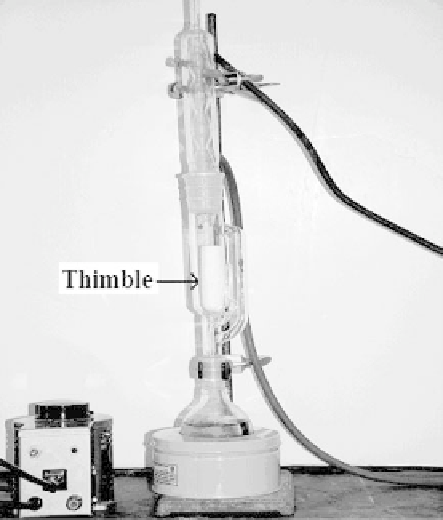Agriculture Reference
In-Depth Information
7.4.2.
Soxhlet Extraction
Soxhlet extraction (see Figure 7.2) is used extensively and is the standard
method for extracting oils from a wide variety of materials, including plant
materials and contaminated soils. The round-bottom flask is filled half-full with
the extractant; the sample to be extracted is placed in a thimble positioned in
the siphon extractor and a condenser attached to the top of the extractor. A
mantle, placed under the flask, heats it so as to maintain a constant flow of
condensed solvent into the thimble. When the extractor fills with extractant,
it is automatically siphoned back into the flask. Extracted components that are
normally higher-boiling than the extractant remain and are concentrated in
the flask. After the prescribed extraction time, the extractant is analyzed for
the component(s) extracted from the sample.
Soxhlet extraction can be used with organic solvents or water and often
results in a solution that is ready to analyze. Figure 7.3 shows the results of
extracting 10 g of soil using a Soxhlet device and a magnetic stirrer. The two
flasks on the left were extracted for 8 h using a Soxhlet extraction procedure.
The leftmost flask is a hexane extract that is absolutely colorless, while the
center flask is a water extract. The right-hand flask is the solution obtained
when 150 mL of distilled water was mixed, using a magnetic stirrer, for 8 h fol-
lowed by filtration. The aqueous Soxhlet extraction has a deep yellow color,
Thimble
Figure 7.2.
Soxhlet setup for extraction of solid samples.


